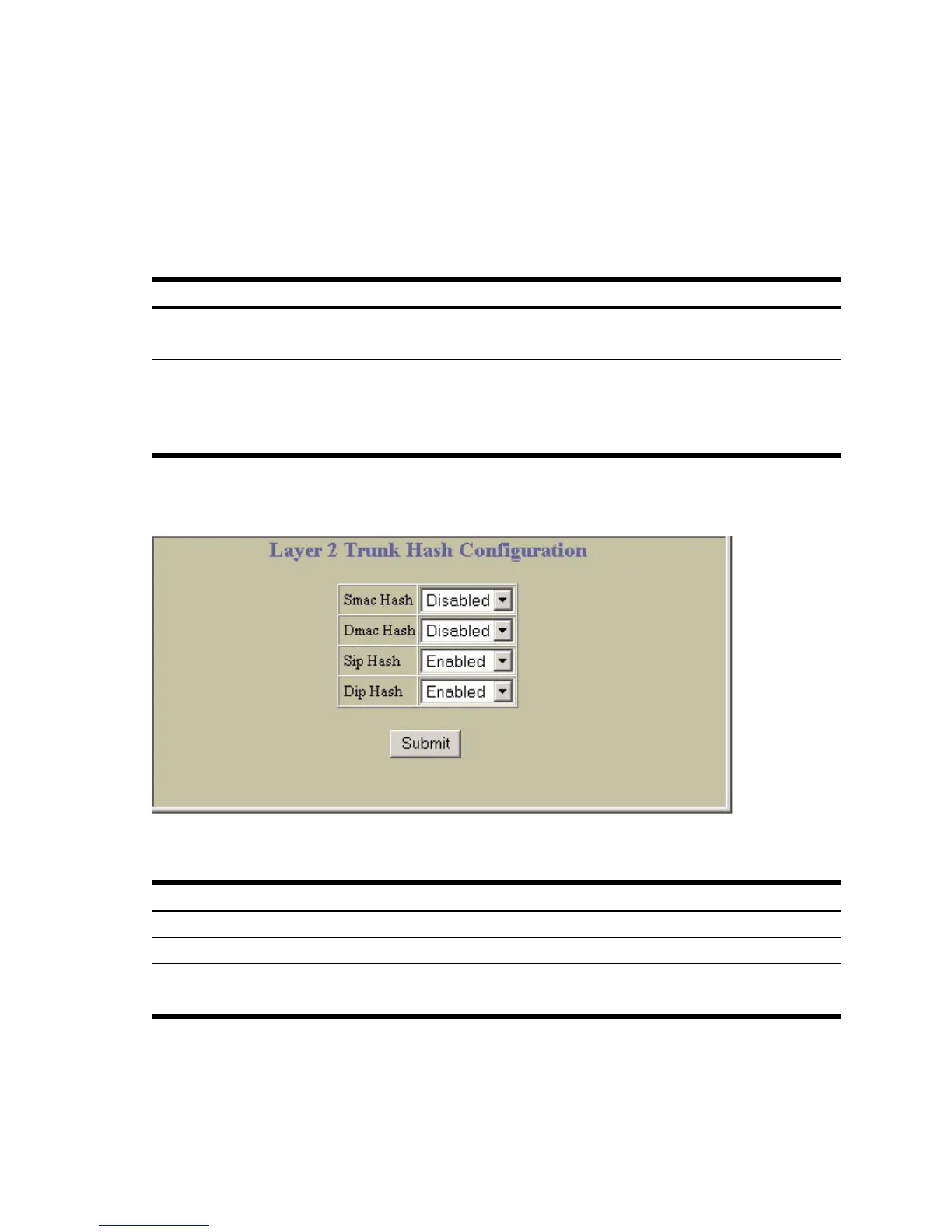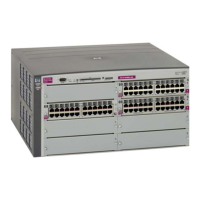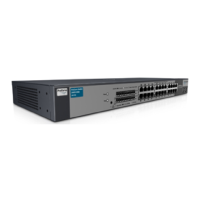Configuring the switch 150
Trunk groups can provide super-bandwidth connections between switches or other trunk capable devices. A
trunk is a group of ports that act together, combining their bandwidth to create a single, larger port. Up to 12
trunk groups can be configured on the switch with the following restrictions:
• Any physical switch port can belong to no more than one trunk group.
• Up to six ports/trunks can belong to the same trunk group.
• All ports in a trunk must have the same configuration for speed, flow control, and autonegotiation.
• Trunking from other devices must comply with Cisco® EtherChannel® technology.
• By default, port 17 and 18 are trunked. By default, ports 17 and 18 are disabled.
The following table describes the Switch Trunk Group Configuration controls:
Table 117 Switch Trunk Group Configuration controls
Control Description
Trunk State Enables or disables the Trunk Group.
Ports Available Lists the ports that you can add to the Trunk Group.
Ports added to Trunk Lists the ports that are members of the Trunk Group.
Select a port number in the Ports Available list, and click Add to add the port to the
Trunk Group.
Select a port number in the Ports added to Trunk list and click Remove to remove
the port from the Trunk Group.
Trunk Hash Configuration
To display the following form, select Layer 2 > Trunk Hash.
The following table describes the Layer 2 Trunk Hash Configuration controls:
Table 118 Layer 2 Trunk Hash Configuration controls
Control Description
Smac Enable or disable trunk hashing on the source MAC.
Dmac Enable or disable trunk hashing on the destination MAC.
Sip Enable or disable trunk hashing on the source IP.
Dip Enable or disable trunk hashing on the destination IP.
